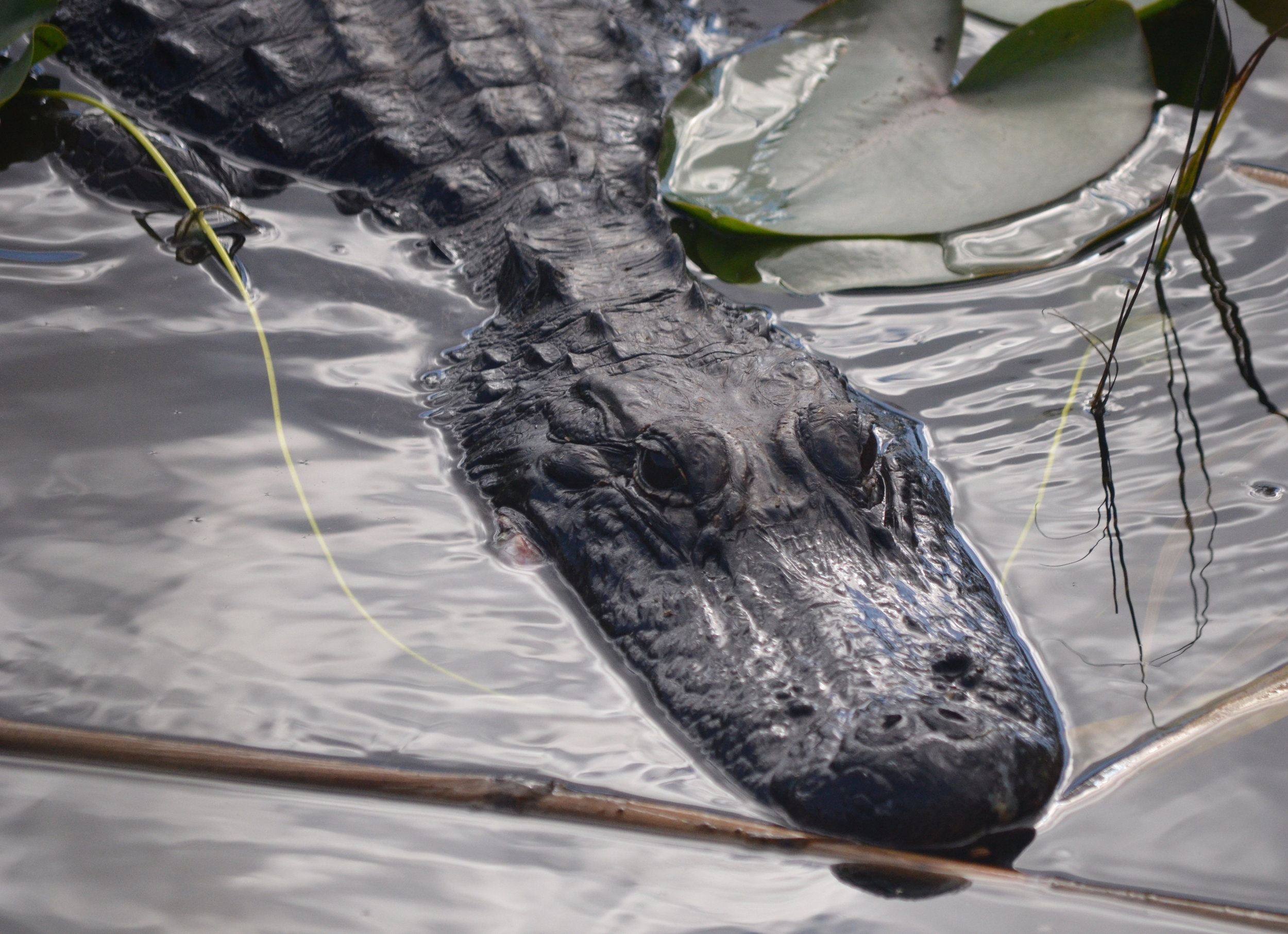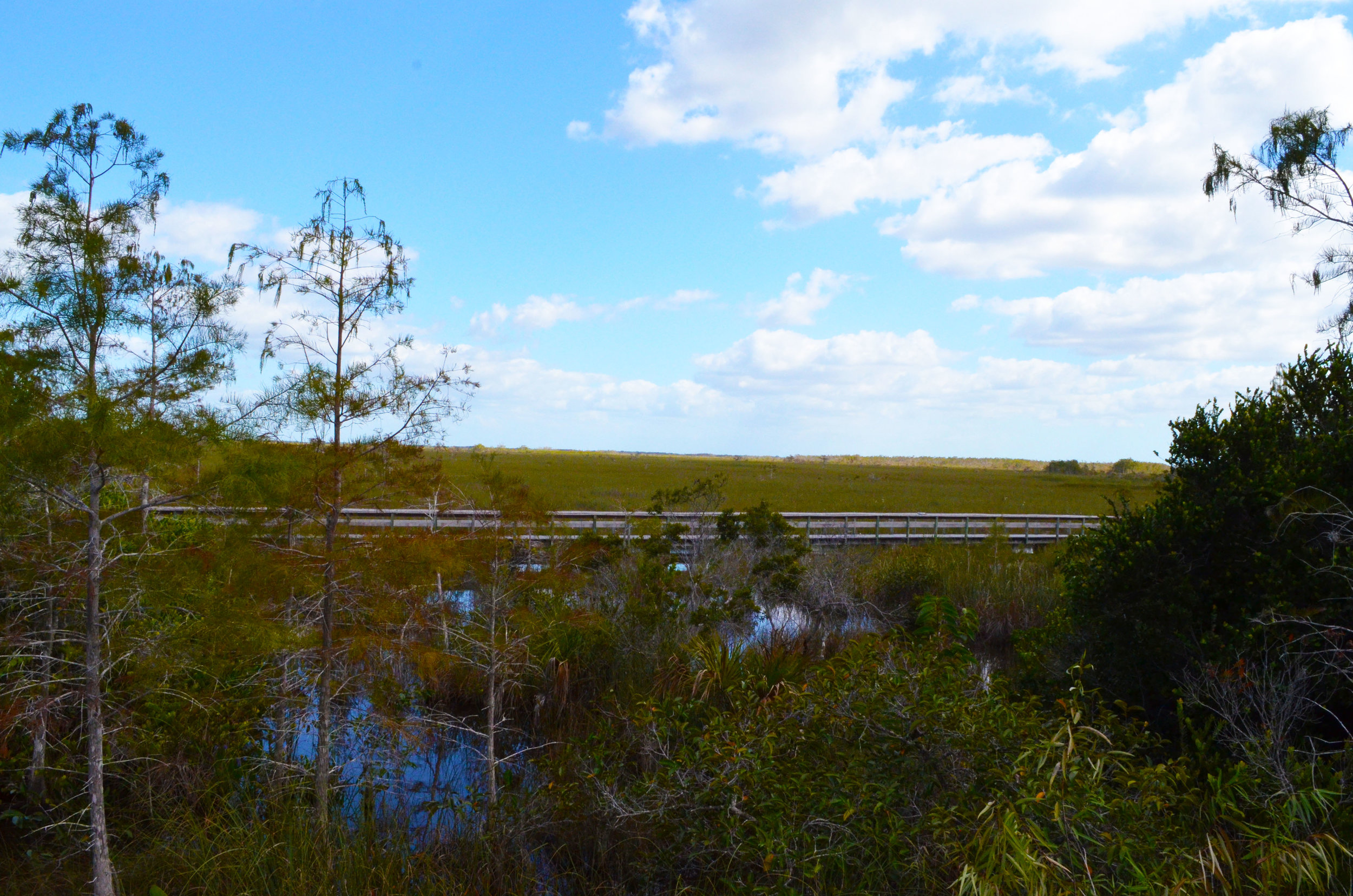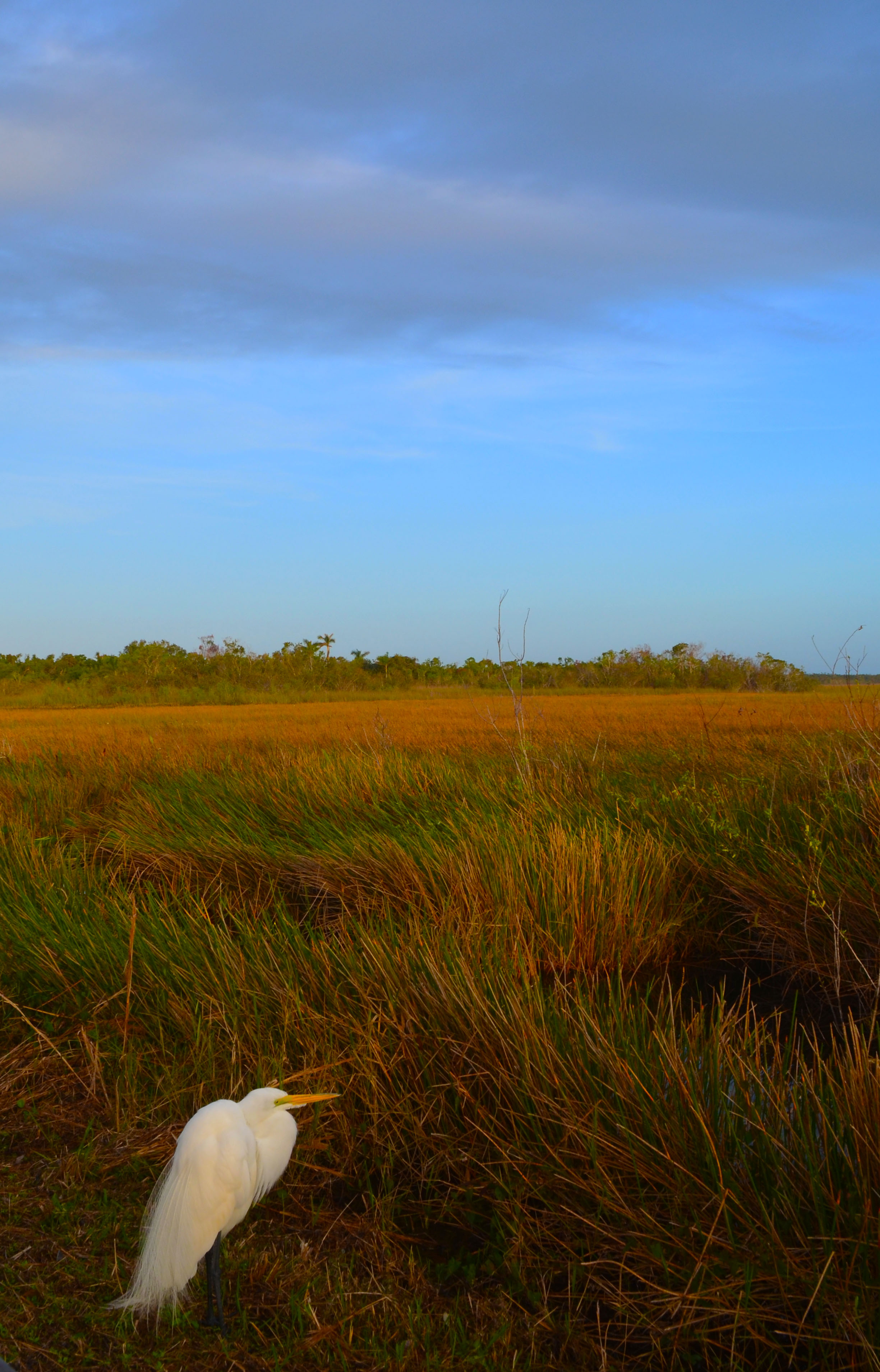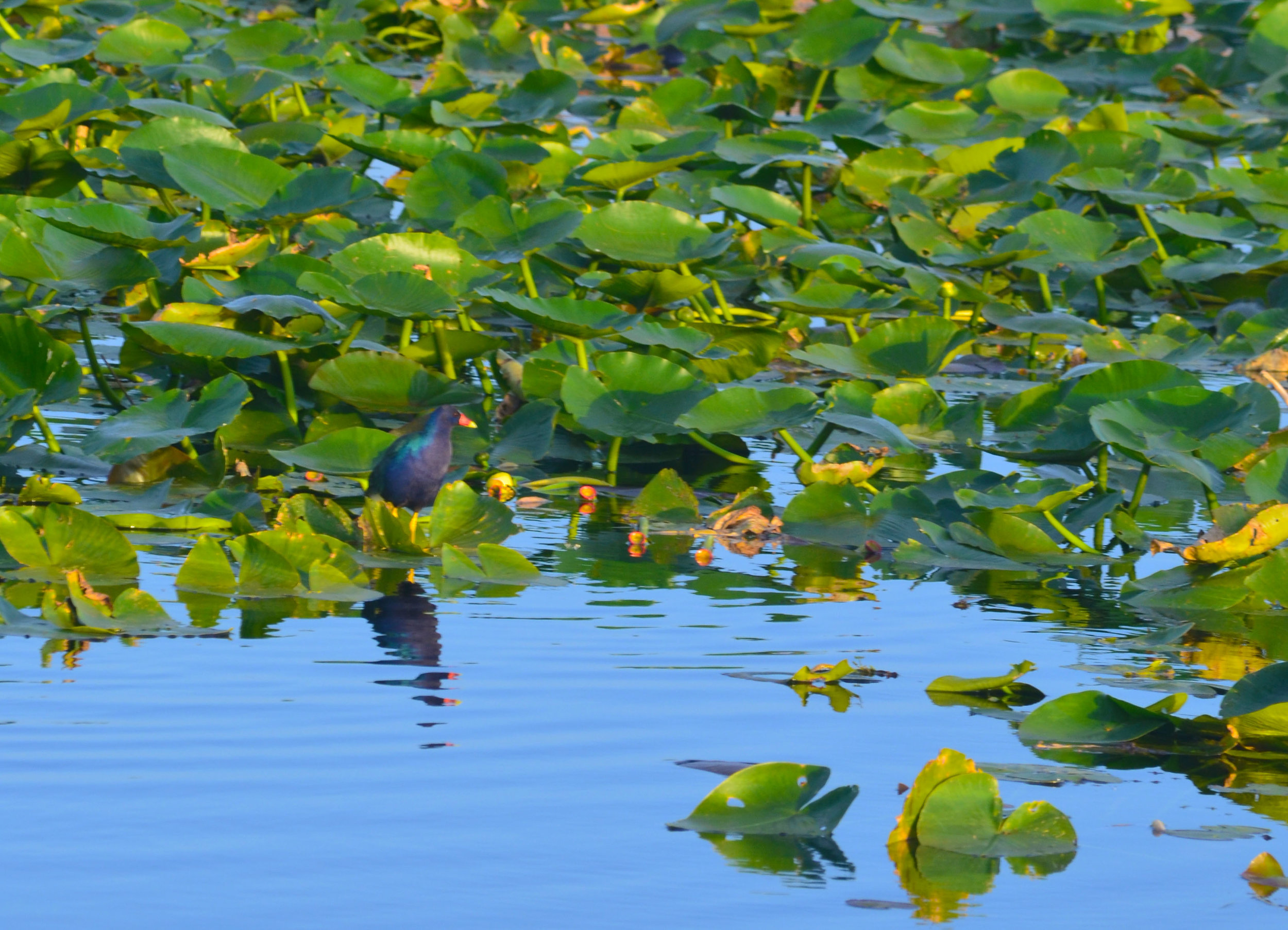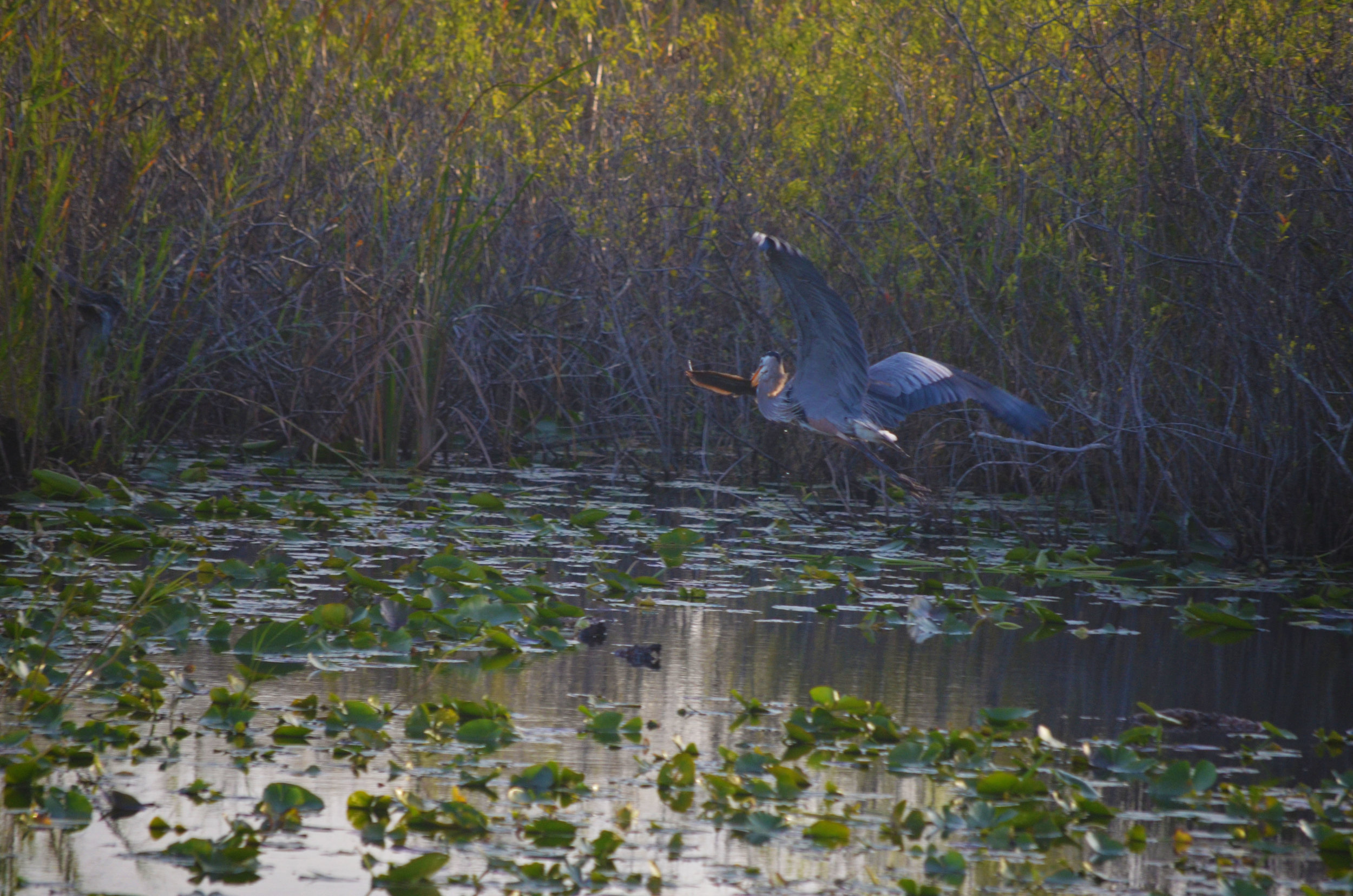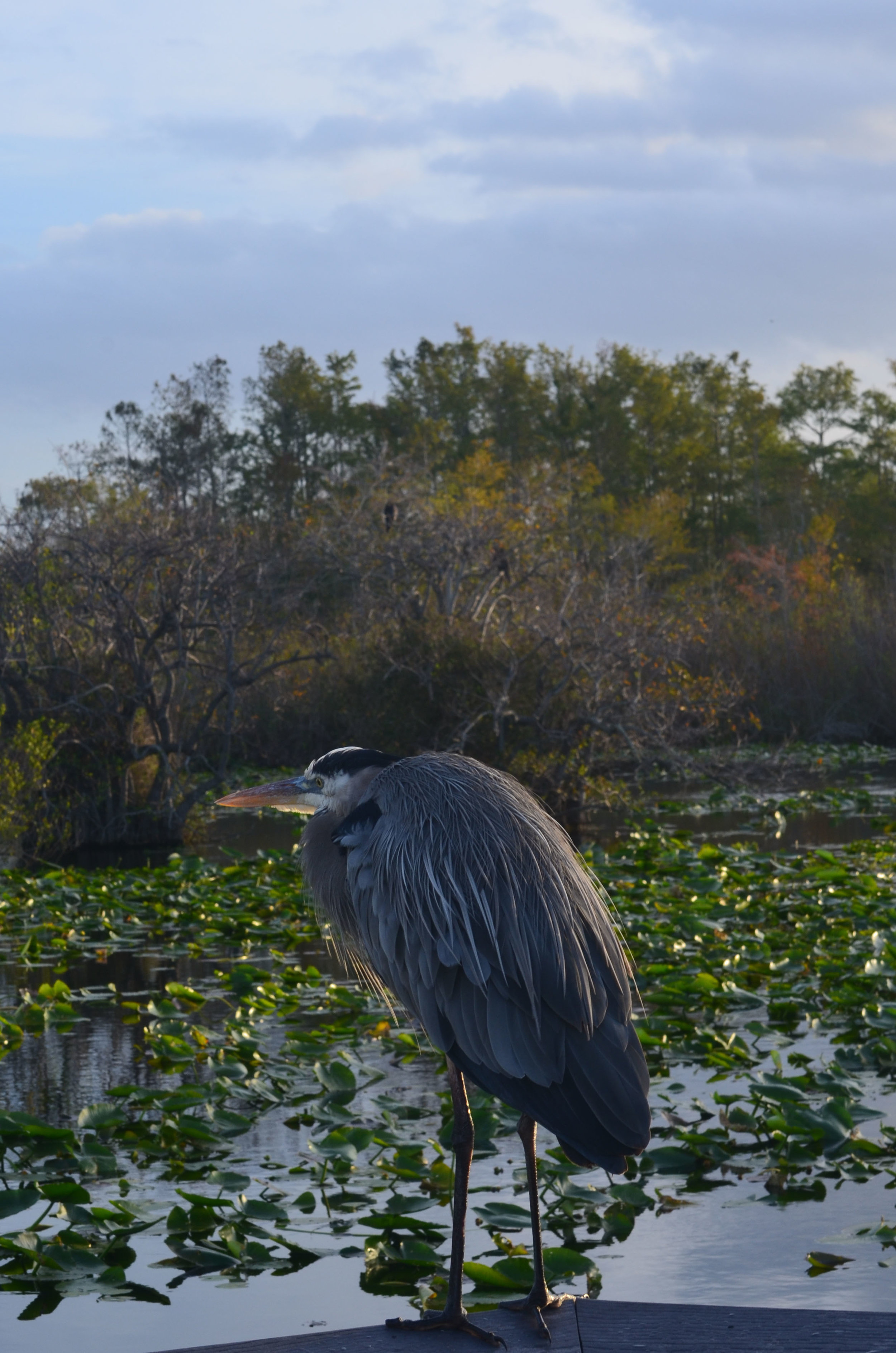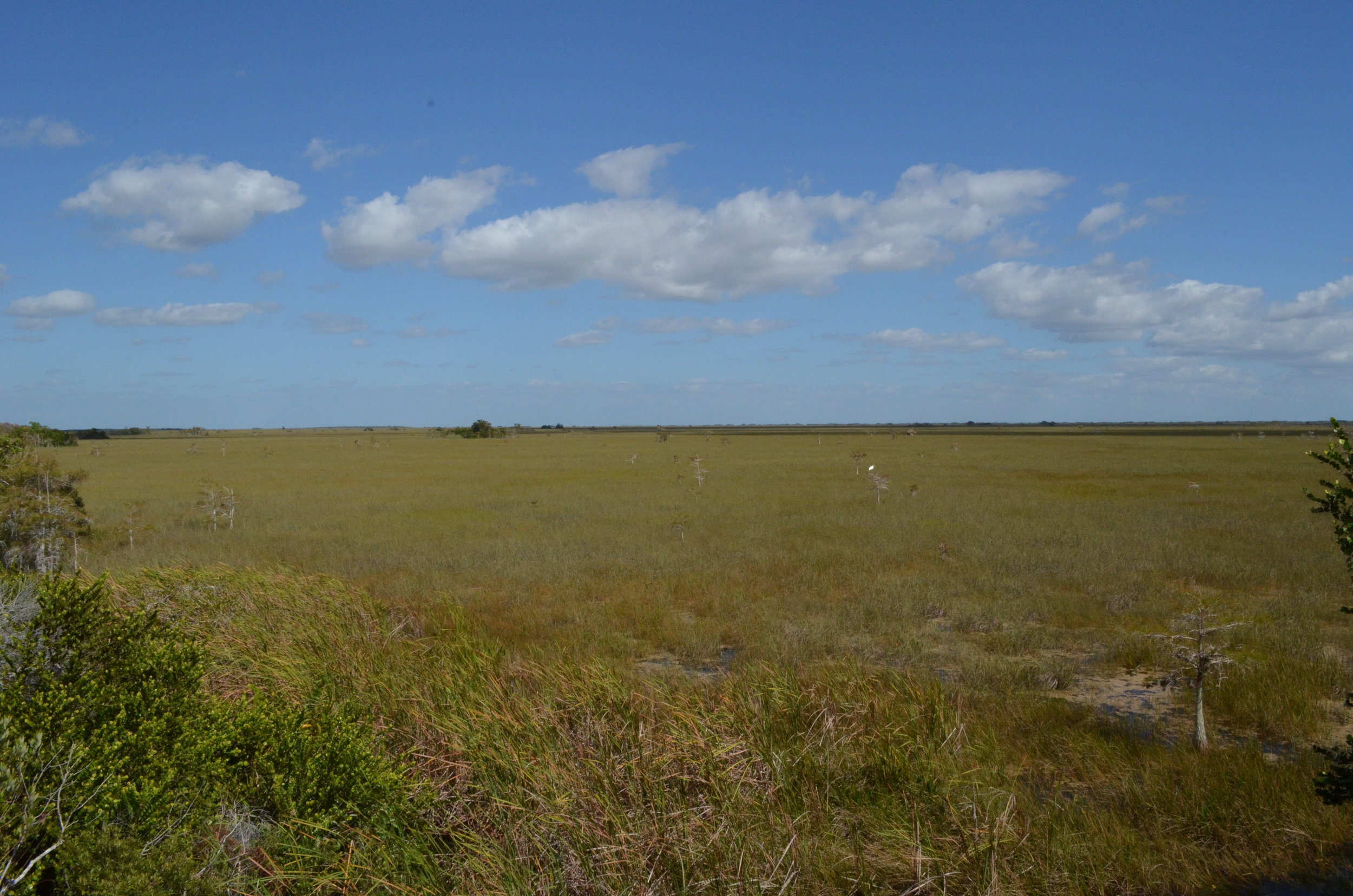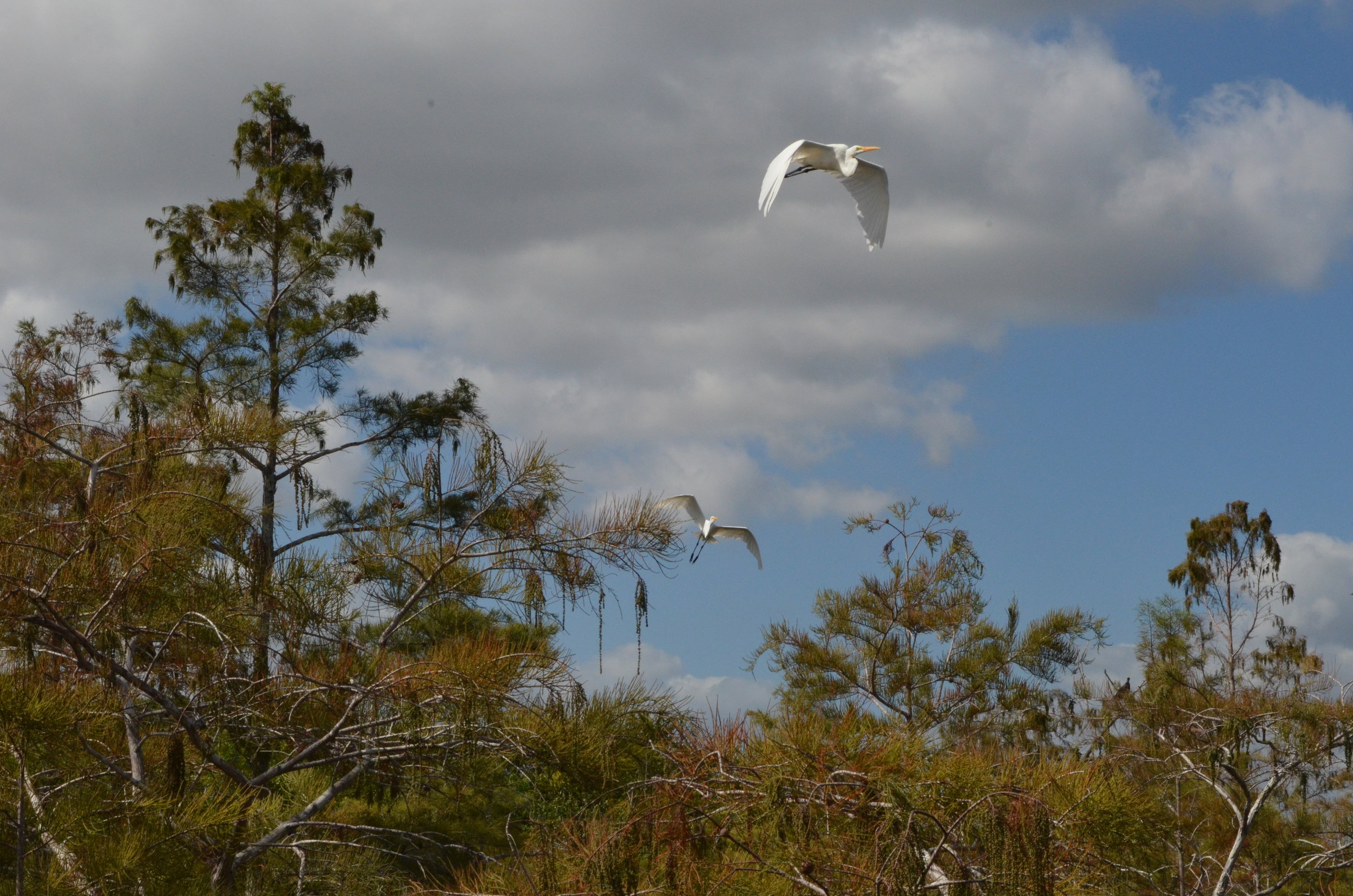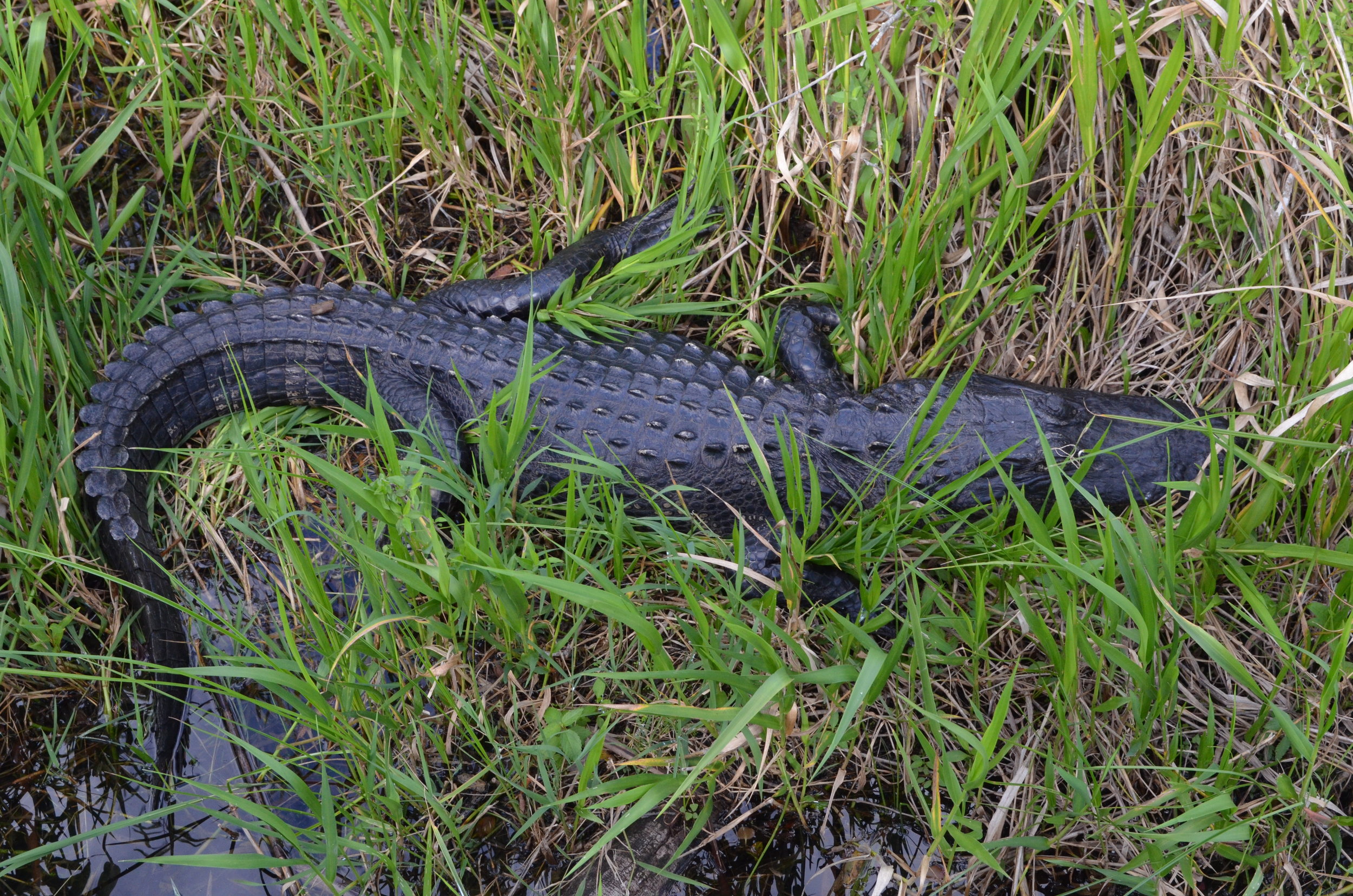I recently visited Everglades National Park, and was reminded again that it is one of the most serene places I have ever been to. A gem of a National park that is not even an hour drive from Miami. I buy an annual pass (only $40!), and I like to go when the chaos of grad school seems to be consuming my life. Most trails are easily accessible elevated platforms, so no special gear is needed to hike around except a little sunblock and bug spray. However now is a particularly pleasant time to visit, as the mosquitos are not as much of a nuisance as they are in the dead of summer. Though, don’t forget that mosquitoes are vital to the food chain in the Everglades. They are an important food source to the fish and birds.
The Everglades is the largest subtropical wetland ecosystem, home to eight different ecosystems (Coastal Prairie, Cypress Dome, Freshwater Slough, Hardwood Hammock, Mangrove Forest, Marl Prairie, Marine and Estuarine Zones, and Pine Rockland). The landscape sometimes called “The River of Grass”, channels vital water from Lake Okeechobee southward and is essentially a very slow-moving river. These unique habitats contain endemic plants and animals, species not found anywhere else in the world. Unfortunately, in the past hundred years, people have dug over 1,800 miles of canals and built damns to divert water for agriculture and urbanization. As a result, the water’s natural flow has been severely disrupted, and the Everglades is less than half of its original size. Additionally, agriculture has leached fertilizers, especially phosphorus, causing nutrient pollution. This has caused a growth of exotic species, harmful algal blooms, and mercury accumulation all, which upset the balance of the ecosystem.
Though the Everglades is called the “River of Grass” to describe the slow movement of water through sawgrass marshes. There are three plant families that resemble grasses, Poaceae–true grasses, Cyperaceae–sedges, and Juncaceae–Rushes. A fun mnemonic to help you remember the differences between three very similar families: Sedges have edges, rushes are round, grasses have knees that bend to the ground. Ironically sawgrass (Cladium jamaicense) is not in the grass family Poaceae, but rather a sedge, characterized by sharp teeth along the three edges of each blade. It is very tough and thrives on the seasonal cycles of fire, flood, and drought as well as the low nutrient levels of the Everglades. Plants generally have spines to avoid being eaten, however sawgrass teeth collect dewdrops that flow the water down it’s edged blade to water the plant in times of drought.
The Everglades is the only place in the world where the American Alligator (Alligator mississippiensis) and the American crocodile (Crocodylus acutus) co-exist. The Crocodile is far less common and has a more triangular snout with a tootheir grin compared to the Alligator’s wider, u-shaped snout which when closed hides all of their teeth. Crocodiles live in salt-water habitats, and Alligators prefer fresh water marshes and lakes. Not much of a birder, I do enjoy going to the Everglades in the winter, as it is a treasure trove for birds. More than 360 bird species have been identified in the park. Many birds migrate, just visiting for the winter, and others live there year round.
My one piece of advice for your visit to the Everglades: When you go to Royal Palm, cover your car with the tarps provided. I learned the hard way during my last visit that the black vultures are no joke. They will eat all of the rubber and vinyl off of your car.
https://www.nps.gov/ever
https://www.evergladesfoundation.org/

